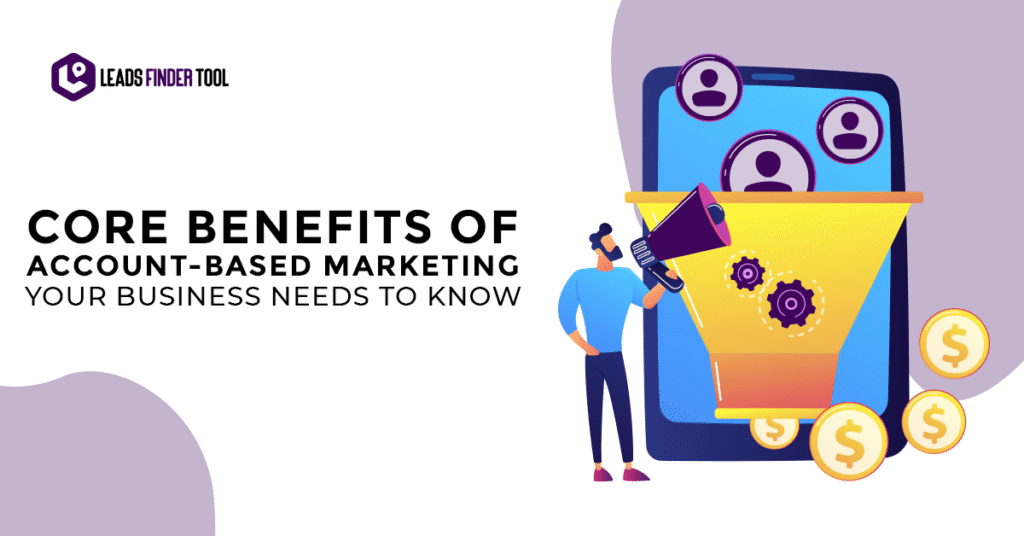Table of Contents
Introduction
We’ll admit it—there was a stretch where our lead numbers looked great on paper. Big list, plenty of clicks, lots of opens. But none of it really meant anything. We weren’t closing the right deals. Hell, half the time we weren’t even talking to the right people.
It took us way too long to face the obvious: more isn’t better. Better is better.
That’s where Account-Based Marketing came in. And while we didn’t nail it out of the gate, the shift in strategy flipped a switch. This post? It’s not theory. It’s a straight-up breakdown of how ABM pulled us out of the marketing hamster wheel and gave our sales team a reason to actually open our emails again.
Why ABM Hit Different for Us
Chasing Everyone Was a Waste. We Picked Our Spots Instead.
We were proud of the 500-lead campaigns. Until we realized many of them were junk. So, we stopped looking for needles in haystacks and just started building smaller haystacks.
Here’s what that meant: we went back, studied who actually bought from us, then built a list of companies that looked like those winners. Not just by size or industry, but stuff like how fast they moved, what tech they used, and what problems they were trying to fix.
And we stuck to it. Fewer accounts, better results. Imagine that.
Defining an ICP Isn’t Just Buzzword Stuff—It’s Survival
We thought we knew our audience. Turns out, we were guessing. So we did something revolutionary: we asked our sales team. We reviewed closed-won deals. We used LeadsFinder.tools to fill in missing info and verified decision-makers.
Once we got real about our Ideal Customer Profile, we stopped wasting time. Engagement improved. Outreach didn’t feel like shouting into the void.
Our inbox replies? Way more interesting.
Sales and Marketing, Sitting in the Same Zoom Room
Before ABM, we were doing that classic “marketing sends leads, sales rolls eyes” dance. It sucked. With ABM, we had shared targets. Sales helped pick accounts. We helped tee up messaging. And suddenly, nobody was blaming anyone—because we were rowing the same direction.Weekly syncs turned from status reports to actual planning. That alone was worth the strategy shift.
Read More: ABM Marketing Strategy Playbook: Your First-Page Guide to Crushing B2B Growth
Personalized Doesn’t Mean Creepy. It Means You Paid Attention.
We dropped the fake personalization—no more “Saw you’re hiring on LinkedIn!” emails. Instead, we focused on useful, specific stuff. “Hey, your team just rolled out HubSpot. Here’s how we helped [similar company] plug data gaps with their CRM.”
ABM let us put in effort where it actually counted. And when prospects said, “This doesn’t feel automated,” we knew we were on the right track.
Metrics That Weren’t Just Vanity Dressed in a Slide Deck
With ABM, tracking got real simple, real fast. Target 25 accounts, run a tight campaign, see what moves
Buyers Could Tell We Weren’t Just Another Sales Team
Something weird happened when we stopped spamming and started showing up with useful info: people responded. They’d say, “You’re the first team that actually researched us.” And even if they didn’t close right away, they remembered us.
Six months later, one of them came back and said, “We’ve had three other vendors pitch us since you reached out, but yours stuck.”
That’s ABM in action.
Traditional vs. ABM: Real Talk
| Old Way | What We Do Now |
|---|---|
| Big campaigns | Focused outreach |
| Generic messaging | Industry-specific content |
| Lead score guessin | Shared account ownership |
| Attribution black holes | Account-level revenue tracking |
Wrapping Up: Our Take? ABM Isn’t Optional Anymore
If you’re still burning budget trying to hit massive lead goals that barely move pipeline, it’s time to stop. Get honest about who your best customers are. Use tools like LeadsFinder.tools to build clean data. And start marketing like every deal actually matters—because it does.
Small, smart, strategic. That’s how we started winning.
5 Things We Screwed Up (So You Don’t Have To)
- We tried to personalize at scale (you can’t)
- We ran ABM without involving sales (rookie move)
- We focused on “influencers,” not buyers
- We tracked too much, learned too little
- We started too big—should’ve started with 10 accounts
FAQs
Q: Can one person run ABM?
Yes. If you’ve got a clear ICP and a handful of tools, you can punch way above your weight.
Q: What’s the barebones setup?
Spreadsheet + CRM + LeadsFinder. That’s enough to get real results.
Q: How soon can I expect a win?
Give it 30–45 days to see engagement. Give it 90+ to see revenue. Play the long game.
